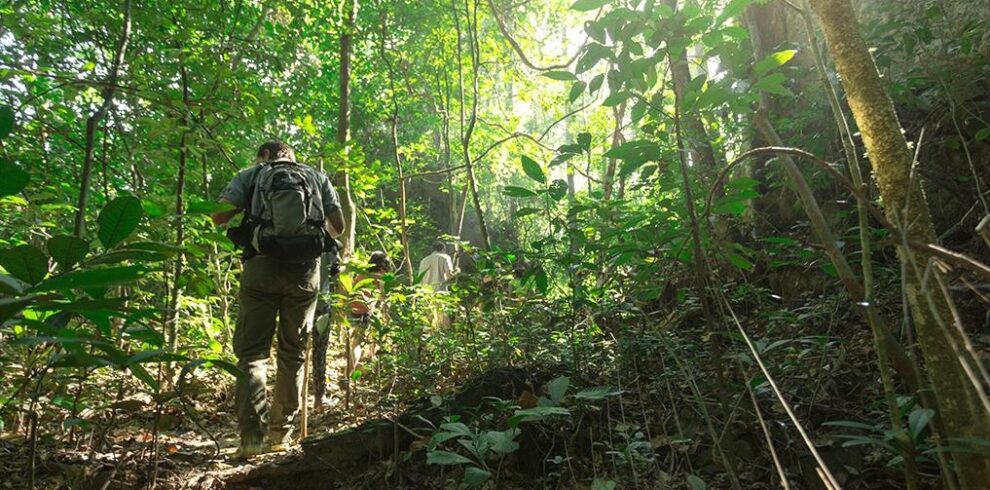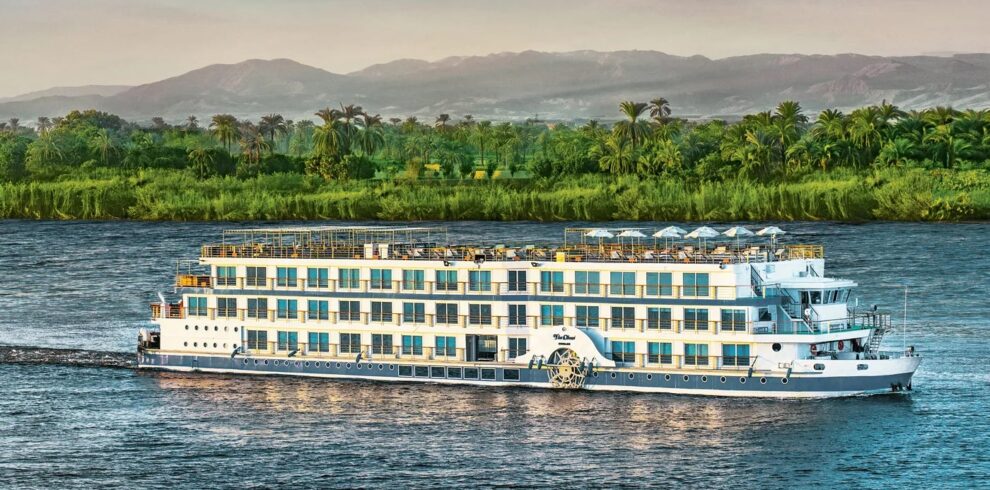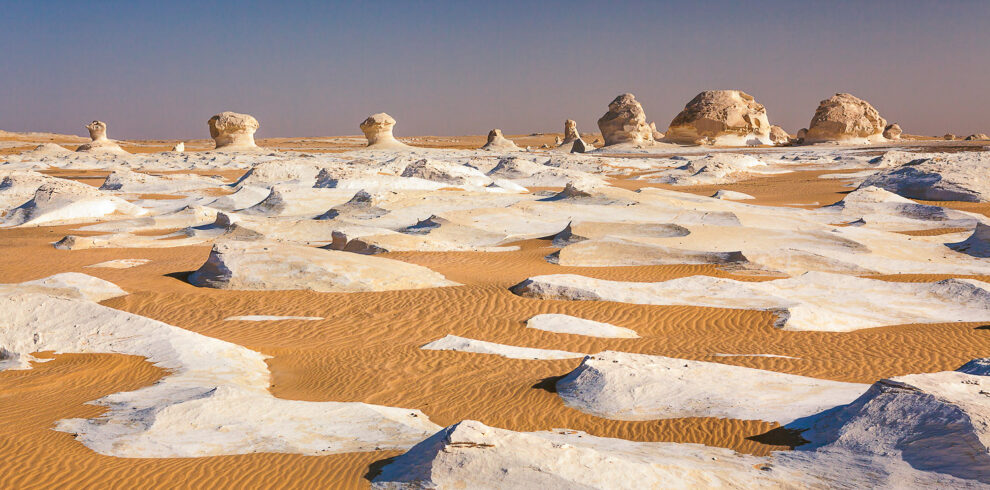This two-week Vietnam itinerary takes you from north to south, starting in Hanoi and ending in Ho Chi Minh City. Experience Hanoi’s vibrant culture, cruise Hạ Long Bay’s emerald waters, and explore historic Hue and Hoi An. The journey concludes with the bustling metropolis of Ho Chi Minh City and a scenic Mekong Delta river trip. This trip perfectly captures Vietnam’s diverse cities and serene landscapes.
Overview
Explore the best of Vietnam in 2 weeks from North to South – Hanoi, Ninh Binh, Halong Cruise, Hue, Hoi An, Ho Chi Minh City and the Mekong Delta.
Hanoi: The capital city, known for its centuries-old architecture and a rich culture with Southeast Asian, Chinese, and French influences.
Ninh Binh:Famous for its ancient temples, colonial-era buildings, and nearby natural sights like Trang An and Tam Coc.
Halong Bay: Known for its emerald waters and thousands of towering limestone islands topped with rainforests.
Hue: This Imperial City was the capital for the Nguyen dynasty and is known for its historic monuments and architecture.
Hoi An: A well-preserved example of a Southeast Asian trading port with buildings and street plan reflecting a unique blend of influences.
Ho Chi Minh City: Formerly known as Saigon, it’s famous for its role in the Vietnam War and is a bustling, modern city.
Mekong Delta: Known for its maze of rivers, swamps, and islands, with floating markets and villages.
Trip Highlights
- Discover the sights, sounds, and flavors of Hanoi.
- Cruise through the incredible landscape of Halong Bay.
- Marvel and the grand imperial buildings in Hue.
- Explore the UNESCO river town of Hoi An.
- Visit Ho Chi Minh City and travel up the Mekong Delta.
Itinerary
The Trip Cost Includes
- 1. Accommodation:
- - 11 nights Hotels with daily breakfast at your selected standard at Hanoi, Ninh Binh, Hue, Hoi An, Ho Chi Minh city and Can Tho,
- - 1 night Cruise at Halong Bay.
- 2. Guide: Experienced English-speaking guides service for sightseeing.
- 3. Transportation:
- - Ground tour/ airport transfers with private A/C vehicle with driver.
- - Domestic airfares (economy class seat) Hanoi - Hue, Da Nang - Ho Chi Minh city.
- - Shared transportation from Halong Bay to Hanoi airport offered by cruise company on Day 5.
- 4. Entrance tickets: Entrance fees for the included sightseeing and activities.
- 5. Full board Cruise tour at Halong Bay
- 6. Other fees: Government tax and travel agency handling fee.
The Trip Cost Excludes
- 1. International flights.
- 2. Any optional visits/tours for an additional cost(Please contact our team of Travel Experts if you want to add some of them to your tour.)
- 3. Meals not indicated in the itinerary
- 4. Drinks, snacks and other personal expenses (e.g. laundry)
- 5. Travel insurance.
- 6. Tipping to your guide & driver.
- 7. International Flights arrival & Departure from Ho Chi Minh City.
- 8. Vietnam visa fee.
Frequently asked Questions
The best time to visit Vietnam depends on the region you plan to visit, as the country spans several climatic zones. Here’s a general guide:
- Northern Vietnam (Hanoi, Ha Long Bay, Sapa): The best time to visit is from October to April. During these months, the weather is generally cool and dry. Winter in the north (December to February) can be quite cold, especially in the mountainous areas like Sapa.
- Central Vietnam (Hue, Da Nang, Hoi An): The ideal time to visit is from January to August. Central Vietnam experiences a dry season with warm weather during this period, making it great for beach holidays and cultural exploration.
- Southern Vietnam (Ho Chi Minh City, Mekong Delta): The dry season, from November to April, is the best time to visit. The weather is hot and humid but more bearable than the rainy season, which lasts from May to October.
- Coastal Areas: For beach destinations like Nha Trang or Phu Quoc, the best time is during their respective dry seasons. For Nha Trang, it’s between January and August, and for Phu Quoc, it’s from November to March.
Keep in mind that Tet, the Vietnamese New Year (usually in late January or early February), is a huge festival. While it’s a culturally rich time to visit, many businesses close during this period, and travel can be more hectic.
Overall, if you plan to travel across multiple regions, the months of March, April, and November often provide a good balance of weather conditions throughout the country.
The currency of Vietnam is the Vietnamese Dong (VND). As for the use of credit cards, it varies depending on where you are in the country:
- Cities and Tourist Areas: In major cities like Hanoi, Ho Chi Minh City, Da Nang, and in well-known tourist destinations, credit cards are widely accepted in hotels, large restaurants, and shopping malls. International credit cards like Visa, MasterCard, and sometimes American Express are commonly accepted.
- ATMs: ATMs are readily available in cities and most towns, making it easy to withdraw cash. Be aware that withdrawal fees and limits can vary between different banks.
- Currency Exchange: It’s a good practice to exchange some money into Vietnamese Dong for smaller purchases and in places where credit cards might not be accepted. Currency exchange services are available at airports, banks, and official exchange counters.
- Traveler’s Checks and Other Currencies: These are not commonly used or accepted in Vietnam. It’s more convenient to rely on cash (in Vietnamese Dong) and credit cards.
In summary, while credit cards are accepted in many places in Vietnam, especially in urban and tourist areas, it’s essential to have local currency for smaller purchases and in less urbanized areas.
Traveling in Vietnam is generally considered safe for tourists. However, as with any travel destination, it’s important to take certain precautions and be aware of local conditions. Here are some safety considerations:
- Crime: Vietnam is relatively safe in terms of violent crime, but petty crimes like pickpocketing, bag snatching, and scams can occur, especially in crowded tourist areas. It’s advisable to be vigilant, keep your belongings secure, and be cautious of scams and overly friendly strangers.
- Traffic Safety: Traffic in Vietnam, particularly in big cities like Hanoi and Ho Chi Minh City, can be chaotic with a large number of motorcycles and scooters. Exercise caution when crossing streets, and always be aware of your surroundings. If you plan to ride a motorcycle, ensure you have the appropriate license, wear a helmet, and understand local traffic laws.
- Health Concerns: Avoid drinking tap water; bottled water is readily available. Be cautious with street food; while it’s a key part of Vietnamese culture and generally safe, ensure it’s freshly cooked and served hot. Also, be up to date with routine vaccinations, and consider vaccinations for hepatitis A and typhoid.
- Natural Hazards: Depending on the season, certain areas might be prone to natural hazards like typhoons (especially from May to October) and flooding. Always check the weather forecast and local news for any travel advisories.
- Local Laws and Customs: Familiarize yourself with local laws and customs to avoid inadvertently offending someone or breaking the law. Drug laws are particularly strict, and penalties for drug offenses are severe.
- Travel Insurance: It’s always advisable to have comprehensive travel insurance that covers theft, loss, medical problems, and emergency evacuation.
Visa requirements depend on your nationality. Many countries are eligible for e-Visas or visa-on-arrival, but it’s best to check the latest regulations.
- Visa Exemptions: Some nationalities are exempt from visas for short visits. For example, citizens of certain Southeast Asian countries can enter Vietnam without a visa for a limited number of days. Some European countries also have visa exemption agreements for short stays (usually up to 15 days). It’s important to check the current visa policy for your specific nationality.
- e-Visa: Vietnam offers an e-Visa option for citizens of about 80 countries. This single-entry visa is valid for up to 30 days and can be applied for online through the official government portal. The process usually involves filling out an application, uploading a photo, and paying a fee. Once approved, the e-Visa is sent via email.
- Visa on Arrival (VOA): For longer stays or for those not eligible for an e-Visa, a Visa on Arrival might be an option. However, this requires a pre-approval letter, which must be arranged prior to travel, usually through a travel agency. Upon arrival in Vietnam, you present the approval letter, passport, and photos, and pay a stamping fee to receive your visa.
- Embassy or Consulate Visa: You can also apply for a visa through a Vietnamese embassy or consulate in your country. This is a more traditional method and may be necessary for certain types of visas, like business or student visas.
- Duration and Types of Visas: The length of stay and type of visa (tourist, business, student, etc.) will vary based on your needs. Ensure you apply for the correct visa category.
- Passport Validity: Your passport should be valid for at least six months beyond your planned date of departure from Vietnam.
Always check the most current visa requirements and travel advisories from an official source or the Vietnamese embassy or consulate in your country, as visa policies can change.
Vietnam is a country rich in culture, history, and natural beauty, offering a wide range of destinations for travelers. Here are some of the top destinations to consider:
- Hanoi: The capital city is known for its centuries-old architecture and a rich culture with Southeast Asian, Chinese, and French influences. Key attractions include the Old Quarter, Hoan Kiem Lake, and the Ho Chi Minh Mausoleum.
- Ha Long Bay: Famous for its stunning limestone karsts and isles in various shapes and sizes, Ha Long Bay is a UNESCO World Heritage Site. It’s best experienced by a boat tour or cruise.
- Hoi An: This charming ancient town is known for its well-preserved Ancient Town, cut through with canals. The former port city’s melting-pot history is reflected in its architecture, a mix of eras and styles.
- Hue: Once the imperial capital of Vietnam, Hue is home to the ruins of the Imperial City, a vast complex of palaces, temples, walls, and gates.
- Da Nang: Known for its sandy beaches and history as a French colonial port, Da Nang is a modern city with attractions like the Marble Mountains and the Dragon Bridge.
- Nha Trang: A coastal resort city known for its beaches, diving sites, and offshore islands. Nha Trang also offers a vibrant nightlife.
- Sapa: Located in the Hoang Lien Son mountains, Sapa is famous for its terraced rice fields and is a great place for trekking and experiencing local ethnic culture.
- Ho Chi Minh City (Saigon): The bustling largest city in Vietnam offers a mix of historic French colonial buildings and modern skyscrapers. Notable attractions include the War Remnants Museum, Notre-Dame Cathedral, and the Cu Chi tunnels.
- Phu Quoc Island: Known for its white-sand beaches and resorts, Phu Quoc is a beautiful island near the Cambodian border. It’s also famous for its fish sauce and black pepper production.
- Mekong Delta: The region in southwestern Vietnam where the Mekong River approaches and empties into the sea. It’s known for its floating markets, lush landscapes, and traditional way of life.
Vietnamese cuisine is diverse, with popular dishes including Pho (noodle soup), Banh Mi (sandwich), spring rolls, and a variety of rice and noodle dishes.
Vietnamese is the official language. English is increasingly spoken, particularly in tourist areas.
Options include buses, trains, taxis, motorbike taxis, and domestic flights. Ride-hailing services like Grab are also popular.
Respectful behavior, especially in religious sites, is important. Dress modestly when visiting temples and pagodas, and remove shoes when entering local homes.
Wi-Fi is widely available in hotels, restaurants, and cafes, especially in urban and tourist areas.
Yes, Vietnam is family-friendly with various activities and cultural experiences that appeal to all ages.





